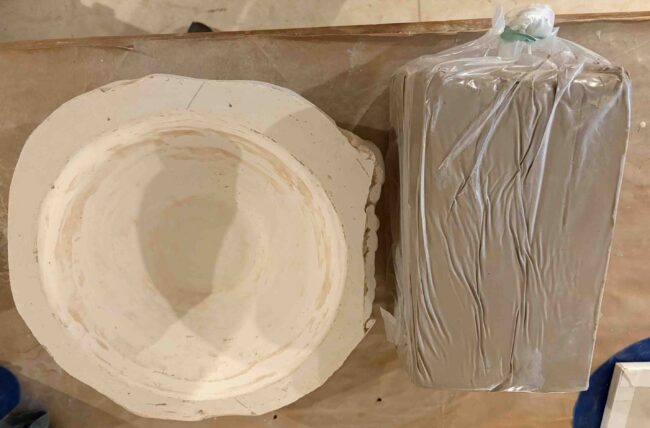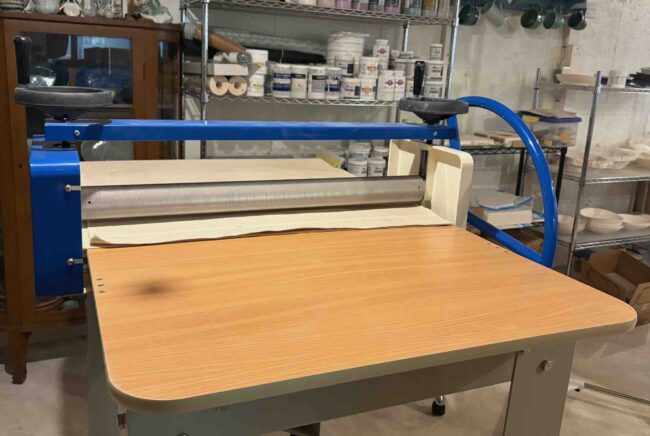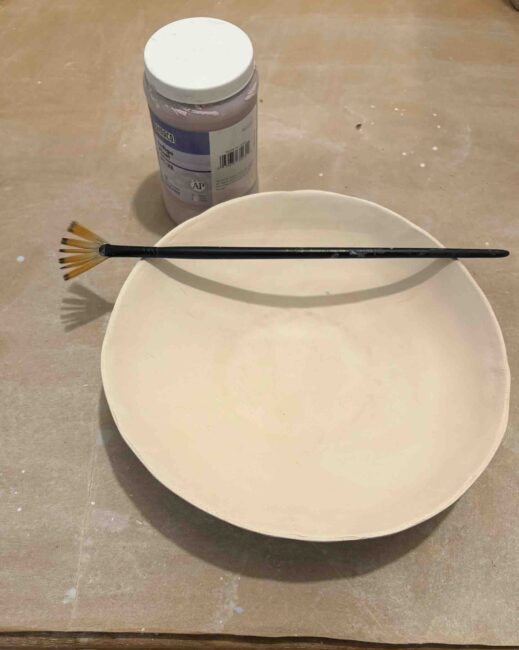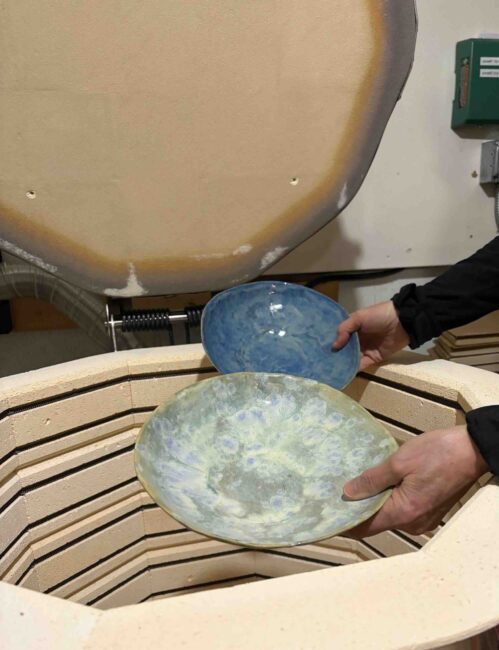One of the most exciting parts of working with clay is opening the kiln after glazing. After all the steps that lead up to glazing my pots, I put them in the kiln, heat it to over 2,000 degrees and then wait for it to cool down so I can open it up. This can take 10-12 hours. I have an idea of what I want my pieces to look like and yet never know until I pull them out. Did I put on enough coats of glaze? Did the mixed glazes come out as I hoped? Did something wonderful and unexpected happen when the heat, silica, pigment and other chemicals from the glaze come together?
There is so much that goes into a piece of pottery made by hand prior to glazing. For example, to make one of my eating bowls, I use a mold that I have made from plaster. I roll the clay out flat using a slab roller (like a very large pasta machine), then carefully pat it into the mold, using both tools and my hands. After I trim and smooth the edges, I allow the clay to dry in the mold for 24 hours. Once the bowl is dry but not brittle, I pull it out of the mold and smooth the base and edges and any other part of the bowl that needs attention. Once it’s signed, it goes into the kiln area to dry fully. This can take up to a week, depending on the weather and humidity.
The bowl then heads into the kiln for the first firing, called a bisque firing. After a slow rise up to 1,945 degrees, the kiln cools down, and about 18-20 hours later, I have my bowl, ready for the next step.
Now it’s decision time – do I try a new glaze or an old favorite, or perhaps I’ll mix a couple of glazes and explore something new. This is a wonderfully creative step in making pottery, filled with color and possibility. I brush on 3-4 coats of the chosen glaze, allowing it to dry in between coats. A sponge with water will clean up any glaze that is not where I want it to be. Then the bowl goes back in the kiln for the final firing, faster than the previous firing, but hotter so the glaze comes together to protect and beautify the bowl. Once the kiln rises to the highest temperature of 2,232 degrees, it cools slowly over 8 hours to room temperature. If opening the kiln is the exciting part, this is the time for being patient. If I open the kiln while the pots inside are too hot, they will experience cold shock and the glaze could crack and eventually come off. It’s time to wait.
Then I open the kiln….




